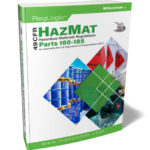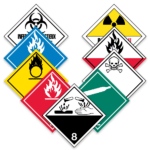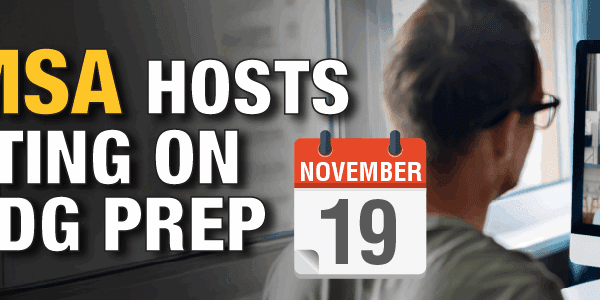
PHMSA Proposes Removal of Appendix A
If you’re familiar with the “Hazardous Materials Regulations” in Title 49 of the Code of Regulations (49 CFR), you’ve probably come across the “Hazardous Materials Table.” This table lists all the descriptions of hazardous materials and provides information about how to ship them. The table is followed by two additional tables called Appendix A and Appendix B. They’ve been used for decades to help determine if the material should be classified as a “hazardous substance” to the environment (Appendix A) or a “marine pollutant” (Appendix B). But time may be running out for Appendix A, as the Pipelines and Hazardous Materials Safety Administration (PHMSA) has decided the table is redundant and announced plans to eliminate it.
What Is Appendix A?
Appendix A to section 172.101 (the Hazardous Materials Table) lists about 3,000 substances that are believed to pose a significant danger to the environment when released unintentionally. Each substance is assigned a “reportable quantity,” or “RQ.” If the amount released equals or exceeds the RQ, the person in charge has specific reporting requirements under the Comprehensive Environmental Response, Compensation, and Liability Act (CERCLA). This is part of the overall “Right to Know” system to protect American communities from dangerous substances.
However, “hazardous substances” weren’t developed by PHMSA or earlier transportation agencies. Instead, they are taken from a list developed by the U.S. Environmental Protection Agency (EPA) in Title 40, Code of Federal Regulations (40 CFR) section 302.4. In this section, you’ll find an identical list to Appendix A as created under CERCLA. This means that for consistency every time EPA updates the CERCLA list, 49 CFR would also have to create a rulemaking to match the changes.
PHMSA Proposes to Eliminate Duplication
In a Notice of Proposed Rulemaking (NPRM) issued on July 1, 2025, PHMSA has proposed that Appendix A should be completely eliminated. Note that it’s not the intent to get rid of the “environmentally hazardous substance” classification. It’s simply to avoid having two duplicate lists which could be updated by different agencies (PHMSA versus EPA) and create confusion if they aren’t perfectly synchronized. Instead, 49 CFR will just include a reference to the EPA CERCLA list, which will be the definitive source on RQs.
One area that some commentators have noticed is that the NPRM would move Appendix B, the list of marine pollutants, up to become the new Appendix A. This may create some confusion in references in regulations as well as in training procedures and standard operating procedures, so there is a suggestion that perhaps the final rulemaking could simply mark Appendix A as “redacted” or have it contain the reference to 40 CFR 302.4, leaving the marine pollutants still as Appendix B.
Conclusion
If you have comments about this rulemaking, PHMSA is accepting them until September 2, 2025. You can e-mail them, referencing the Docket Number PHMSA-2026-0093 (HM-268E), to the E-Gov website at www.regulations.gov, send them by regular mail or fax them to 1-202-493-2251 or send us an email, we’re happy to help.
The proposed changes shouldn’t have a significant impact beyond making 49 CFR slightly slimmer, and avoiding confusion if the list of reportable quantities is updated by one agency not the other. However, if you foresee unexpected consequences, be sure to let PHMSA know by the deadline.
Do you have questions about hazardous substances and reportable quantities? Need to keep track of upcoming changes that could affect your business? Contact ICC Compliance Center 1-888-442-9628 (U.S.) or 1-888-977-4834 (Canada) if you have questions regarding the regulations in general or need products to help you comply.
Stay up to date and sign up for our newsletter!
We have all the products, services and training you need to ensure your staff is properly trained and informed.
 49 CFR Publications 49 CFR Publications |
 UN Approved Packaging and Boxes |
 Hazard Class Labels Hazard Class Labels |





